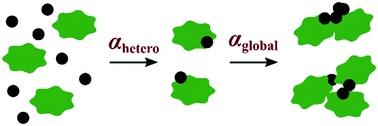当前位置:
X-MOL 学术
›
Environ. Sci.: Nano
›
论文详情
Our official English website, www.x-mol.net, welcomes your
feedback! (Note: you will need to create a separate account there.)
Strategies for determining heteroaggregation attachment efficiencies of engineered nanoparticles in aquatic environments
Environmental Science: Nano ( IF 5.8 ) Pub Date : 2020/01/08 , DOI: 10.1039/c9en01016e Antonia Praetorius 1, 2, 3, 4, 5 , Elena Badetti 6, 7, 8, 9, 10 , Andrea Brunelli 1, 2, 3, 4, 5 , Arnaud Clavier 11, 12, 13 , Julián Alberto Gallego-Urrea 14, 15, 16, 17, 18 , Andreas Gondikas 14, 15, 16, 17, 18 , Martin Hassellöv 14, 15, 16, 17, 18 , Thilo Hofmann 1, 2, 3, 4, 5 , Aiga Mackevica 1, 2, 3, 4, 5 , Antonio Marcomini 6, 7, 8, 9, 10 , Willie Peijnenburg 19, 20, 21, 22, 23 , Joris T. K. Quik 20, 21, 22, 24 , Marianne Seijo 11, 12, 13 , Serge Stoll 11, 12, 13 , Nathalie Tepe 1, 2, 3, 4, 5 , Helene Walch 1, 2, 3, 4, 5 , Frank von der Kammer 1, 2, 3, 4, 5
Environmental Science: Nano ( IF 5.8 ) Pub Date : 2020/01/08 , DOI: 10.1039/c9en01016e Antonia Praetorius 1, 2, 3, 4, 5 , Elena Badetti 6, 7, 8, 9, 10 , Andrea Brunelli 1, 2, 3, 4, 5 , Arnaud Clavier 11, 12, 13 , Julián Alberto Gallego-Urrea 14, 15, 16, 17, 18 , Andreas Gondikas 14, 15, 16, 17, 18 , Martin Hassellöv 14, 15, 16, 17, 18 , Thilo Hofmann 1, 2, 3, 4, 5 , Aiga Mackevica 1, 2, 3, 4, 5 , Antonio Marcomini 6, 7, 8, 9, 10 , Willie Peijnenburg 19, 20, 21, 22, 23 , Joris T. K. Quik 20, 21, 22, 24 , Marianne Seijo 11, 12, 13 , Serge Stoll 11, 12, 13 , Nathalie Tepe 1, 2, 3, 4, 5 , Helene Walch 1, 2, 3, 4, 5 , Frank von der Kammer 1, 2, 3, 4, 5
Affiliation

|
Heteroaggregation of engineered nanoparticles (ENPs) with suspended particulate matter (SPM) ubiquitous in natural waters often dominates the transport behaviour and overall fate of ENPs in aquatic environments. In order to provide meaningful exposure predictions and support risk assessment for ENPs, environmental fate and transport models require quantitative information about this process, typically in the form of the so-called attachment efficiency for heteroaggregation αhetero. The inherent complexity of heteroaggregation—encompassing at least two different particle populations, various aggregation pathways and several possible attachment efficiencies (α values)—makes its theoretical and experimental determination challenging. In this frontier review we assess the current state of knowledge on heteroaggregation of ENPs with a focus on natural surface waters. A theoretical analysis presents relevant equations, outlines the possible aggregation pathways and highlights different types of α. In a second part, experimental approaches to study heteroaggregation and derive α values are reviewed and three possible strategies are identified: i) monitoring changes in size, ii) monitoring number or mass distribution and iii) studying indirect effects, such as sedimentation. It becomes apparent that the complexity of heteroaggregation creates various challenges and no single best method for its assessment has been developed yet. Nevertheless, many promising strategies have been identified and meaningful data can be derived from carefully designed experiments when accounting for the different concurrent aggregation pathways and clearly stating the type of α reported. For future method development a closer connection between experiments and models is encouraged.
中文翻译:

确定水生环境中工程纳米颗粒异质聚集附着效率的策略
在天然水中普遍存在的工程化纳米颗粒(ENP)与悬浮颗粒物(SPM)的异质聚集通常主导着ENP在水生环境中的运输行为和整体命运。为了为ENP提供有意义的暴露预测并支持风险评估,环境归宿和运输模型需要有关此过程的定量信息,通常以所谓的杂聚α异物附着效率的形式。异质聚集的内在复杂性-包含至少两个不同的粒子群体,各种聚集途径和几种可能的附着效率(α值)-使其理论和实验确定性具有挑战性。在此前沿评估中,我们评估了ENP杂化聚集的知识现状,重点是天然地表水。理论分析提供了相关的方程式,概述了可能的聚集途径并突出了不同类型的α。在第二部分中,研究杂聚并推导α的实验方法评估值并确定三种可能的策略:i)监测尺寸变化,ii)监测数量或质量分布,iii)研究间接影响,例如沉降。显而易见的是,异类聚合的复杂性带来了各种挑战,并且尚未开发出评估其的最佳方法。然而,当考虑到不同的并发聚集途径并清楚说明所报道的α类型时,已经确定了许多有希望的策略,并且可以从精心设计的实验中获得有意义的数据。为了将来的方法开发,鼓励在实验和模型之间建立更紧密的联系。
更新日期:2020-02-20
中文翻译:

确定水生环境中工程纳米颗粒异质聚集附着效率的策略
在天然水中普遍存在的工程化纳米颗粒(ENP)与悬浮颗粒物(SPM)的异质聚集通常主导着ENP在水生环境中的运输行为和整体命运。为了为ENP提供有意义的暴露预测并支持风险评估,环境归宿和运输模型需要有关此过程的定量信息,通常以所谓的杂聚α异物附着效率的形式。异质聚集的内在复杂性-包含至少两个不同的粒子群体,各种聚集途径和几种可能的附着效率(α值)-使其理论和实验确定性具有挑战性。在此前沿评估中,我们评估了ENP杂化聚集的知识现状,重点是天然地表水。理论分析提供了相关的方程式,概述了可能的聚集途径并突出了不同类型的α。在第二部分中,研究杂聚并推导α的实验方法评估值并确定三种可能的策略:i)监测尺寸变化,ii)监测数量或质量分布,iii)研究间接影响,例如沉降。显而易见的是,异类聚合的复杂性带来了各种挑战,并且尚未开发出评估其的最佳方法。然而,当考虑到不同的并发聚集途径并清楚说明所报道的α类型时,已经确定了许多有希望的策略,并且可以从精心设计的实验中获得有意义的数据。为了将来的方法开发,鼓励在实验和模型之间建立更紧密的联系。











































 京公网安备 11010802027423号
京公网安备 11010802027423号